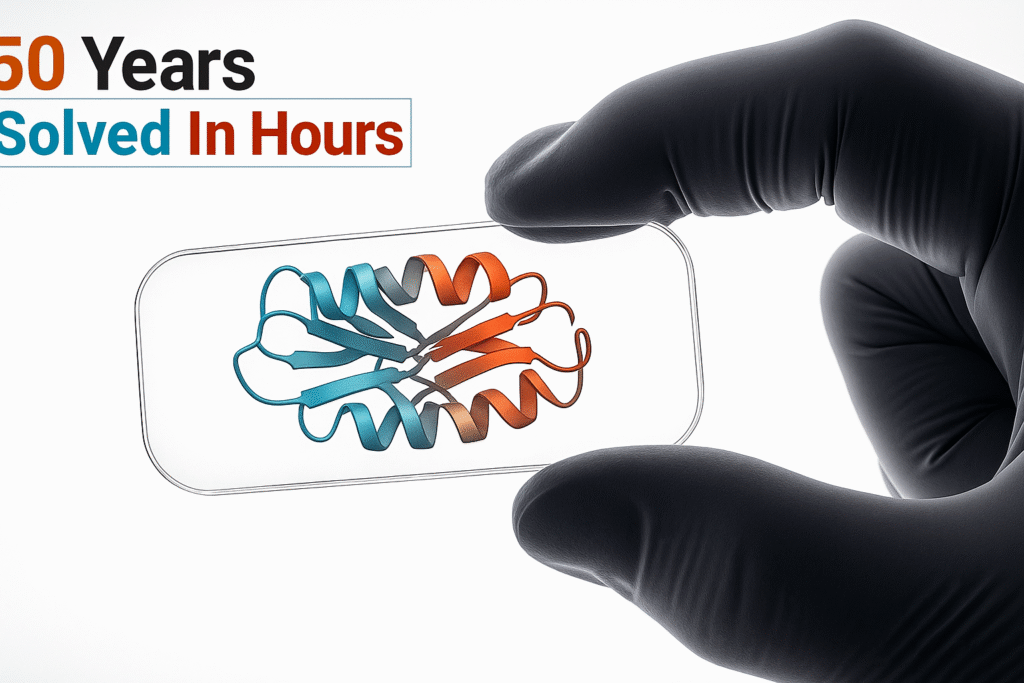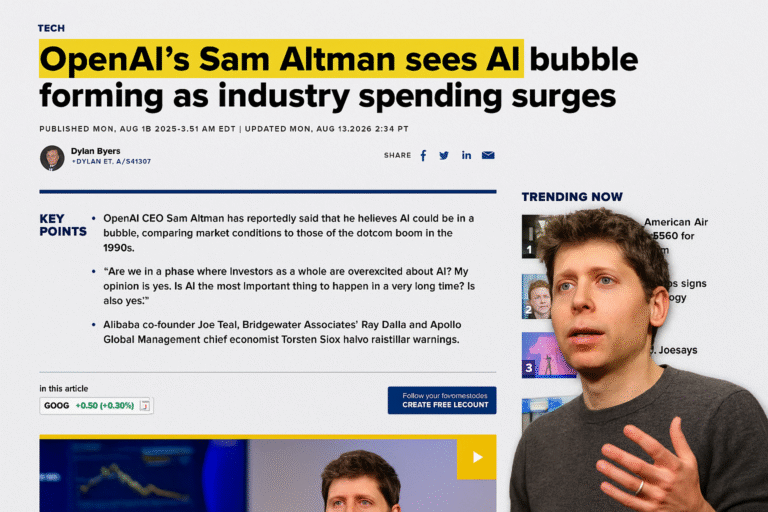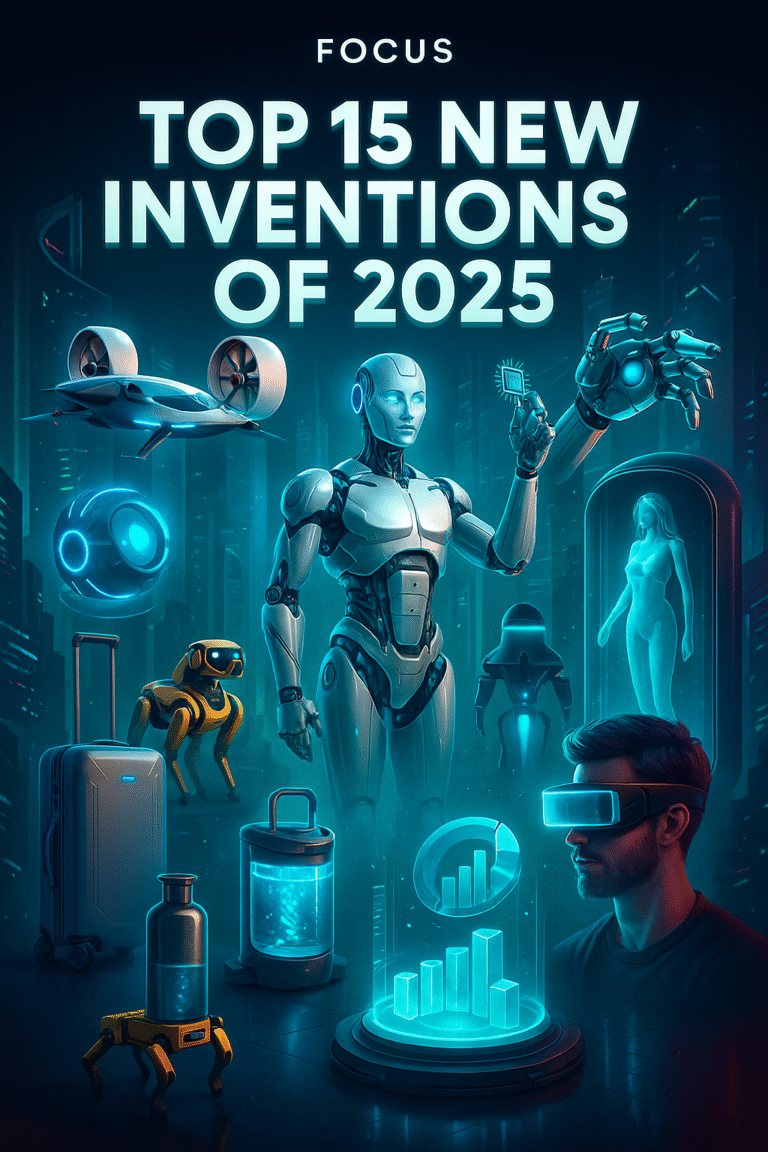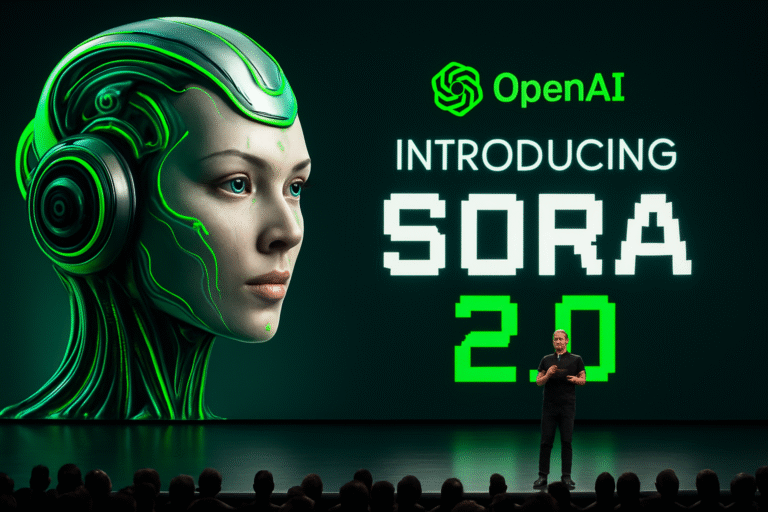
Introduction: The Rise of AI Breakthroughs
Artificial intelligence is no longer just a tool—it’s becoming a discovery engine. From healthcare to astrophysics, recent AI breakthroughs are solving problems that once took decades in just days. In this article, we’ll count down the top 15 AI breakthroughs changing science, medicine, physics, and the world around us.
Protein Structure Prediction Breakthrough
For over 50 years, predicting how proteins fold was one of biology’s greatest challenges. Misfolded proteins are linked to diseases like Alzheimer’s and Parkinson’s. In 2020, DeepMind’s AlphaFold revolutionized the field by accurately predicting protein structures in hours. By 2022, it had mapped over 200 million proteins — covering nearly every known protein on Earth.
Researchers now use these predictions to design drugs, create enzymes, and even explore ways to combat antibiotic resistance. This AI discovery is already accelerating treatments and shaping the future of biology.
AI for Brain-Computer Interfaces
Imagine communicating directly with your thoughts. In 2023, Stanford researchers used AI to decode brain activity into text at nearly 80 words per minute for paralyzed patients. Similarly, UCSF researchers trained AI models to translate brain signals into sentences.
Beyond communication, brain-computer interfaces (BCIs) allow patients to control robotic arms and keyboards. Thanks to AI, these systems are now more accurate, wireless, and less invasive—bringing futuristic possibilities closer to reality.
AI in Mathematical Reasoning
AI is now excelling in mathematics. In 2024, DeepMind’s Alpha Geometry solved 83% of International Mathematical Olympiad geometry problems, rivaling gold medalists. Unlike most AI systems, it showed step-by-step reasoning like a human.
Geometry underpins robotics, navigation, and physics, meaning this AI breakthrough could transform both pure mathematics and real-world engineering applications.
AI Weather Forecasting Breakthroughs
Traditional forecasting models require hours of supercomputing. In 2023, DeepMind’s Graph Cast produced accurate forecasts in seconds. It outperformed Europe’s ECMWF model on 90% of key metrics and successfully predicted Cyclone Mocha nearly a week in advance.
With climate change intensifying storms, this AI forecasting system could save countless lives by giving communities more time to prepare.
Discovery of Stable New Materials
In 2023, Google DeepMind’s GNoME predicted the stability of millions of crystal structures. Among them were 380,000 stable new materials—a leap equivalent to 800 years of lab work.
Confirmed discoveries include new materials for batteries, solar panels, and superconductors. AI is now guiding scientists toward the next generation of advanced technologies.
AI-Invented Algorithms
AI is now creating algorithms faster than humans. In 2023, DeepMind’s Alph Adev discovered a sorting algorithm that entered the C++ standard library—the first AI-created algorithm integrated into core computing.
By 2025, Alpha Evolve designed algorithms across 50 math and optimization problems, outperforming human-devised solutions. These algorithms could save global computing power on an unprecedented scale.
Automated Robotic Scientific Discovery
In 2023, the University of Liverpool unveiled an autonomous robot scientist that runs experiments 24/7. Unlike human labs, which close overnight, these AI-driven systems test hypotheses, analyze results, and make decisions without rest.
This could accelerate research in chemistry, biology, and materials science, transforming how discoveries are made.
AI for Radiology Analysis
Medical imaging produces millions of scans daily, overwhelming radiologists. In 2023, Google’s Med-PaLM M showed diagnostic accuracy on par with expert radiologists. The UK’s NHS also began using AI to triage urgent cases.
Instead of replacing doctors, these AI tools act as co-pilots, spotting early signs of cancer or fractures under pressure.
Mapping the Human Brain
The human brain has 87 billion neurons yet mapping it remains a challenge. In 2023, Google and Harvard released the most detailed 3D reconstruction of brain tissue ever covering a cubic millimeter with 57,000 cells and billions of connections.
This unprecedented AI breakthrough revealed new synaptic patterns, offering fresh insights into memory, cognition, and disease research.
AI for Climate Change Modeling
NVIDIA’s Earth-2 initiative is building a digital twin of Earth to simulate climate change at ultra-high resolution. In 2023, AI predicted drought risks and extreme heat waves months in advance.
These rapid simulations help policymakers test “what-if” scenarios, making AI a vital ally in the fight against climate change.
AI in Gravitational Wave Discoveries
Detecting gravitational waves requires analyzing massive datasets. In 2023, AI-powered deep learning systems improved detection speed and accuracy, helping classify cosmic events like black hole mergers.
This advancement allows astrophysicists to study the universe’s most extreme events in real time.
AI-Assisted Drug and Protein Design
Drug development typically takes over a decade. In 2023, Insilico Medicine announced an AI-designed drug entering clinical trials for pulmonary fibrosis. Generative AI also produced millions of therapeutic protein structures for cancer and antiviral treatments.
This shift could cut drug discovery timelines dramatically, saving lives and costs.
Quantum Computing for Chemistry Simulations
Quantum computing is notoriously fragile, but AI is making it more reliable. In 2023, researchers used AI-optimized quantum algorithms to simulate chemical reactions critical for clean energy, like hydrogen fuel catalysts.
With backing from Google and IBM, this fusion of AI and quantum computing could redefine renewable energy research.
Spatial Intelligence in AI
AI is learning to navigate the real world. In 2024, companies like Niantic and Google demonstrated centimeter-level mapping accuracy for AR and robotics.
From self-driving cars to supply chain logistics, spatial intelligence ensures AI can bridge the gap between the digital and physical world.
Quantum AI Chip Willow
The Google Willow chip, unveiled in 2024, is a 105-qubit quantum processor designed for AI. It solved problems in five minutes that would take supercomputers billions of years.
This marks the dawn of quantum AI, combining quantum speed with AI’s pattern recognition to revolutionize science, cryptography, and beyond.
FAQs
Q1: What are AI breakthroughs?
AI breakthroughs are major advancements where artificial intelligence solves complex problems in science, medicine, or technology faster and more effectively than humans.
Q2: How is AI helping medicine?
AI aids in drug discovery, medical imaging, and brain-computer interfaces, improving diagnosis, treatment, and patient communication.
Q3: Can AI predict natural disasters?
Yes, AI forecasting models like Graph Cast predict cyclones and storms days earlier than traditional systems.
Q4: What is AlphaFold?
AlphaFold is a DeepMind AI that predicts protein structures, revolutionizing biology and drug design.
Q5: How is AI used in space research?
AI helps detect gravitational waves, classify cosmic events, and analyze massive datasets from observatories.
Q6: What is the future of AI breakthroughs?
The future includes quantum AI, better medical treatments, faster scientific discoveries, and smarter environmental predictions.
Conclusion: The Future of AI Breakthroughs
From protein folding to quantum chips, these AI breakthroughs are transforming how we understand life, the universe, and everything in between. AI is no longer just supporting research—it’s leading it, turning decades of work into days.
The story of AI in science has only just begun, and its ripple effects will touch every part of our lives in the years ahead.


